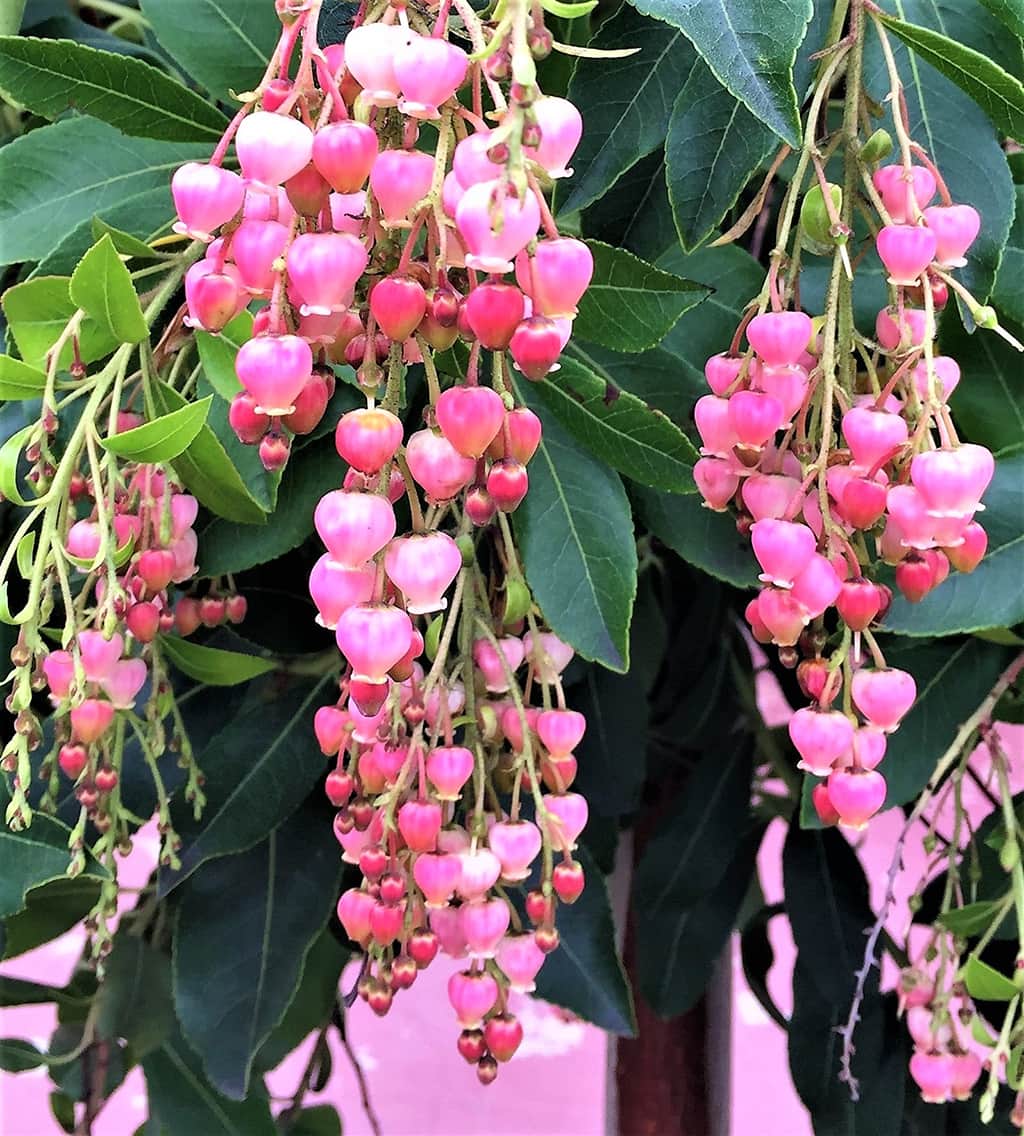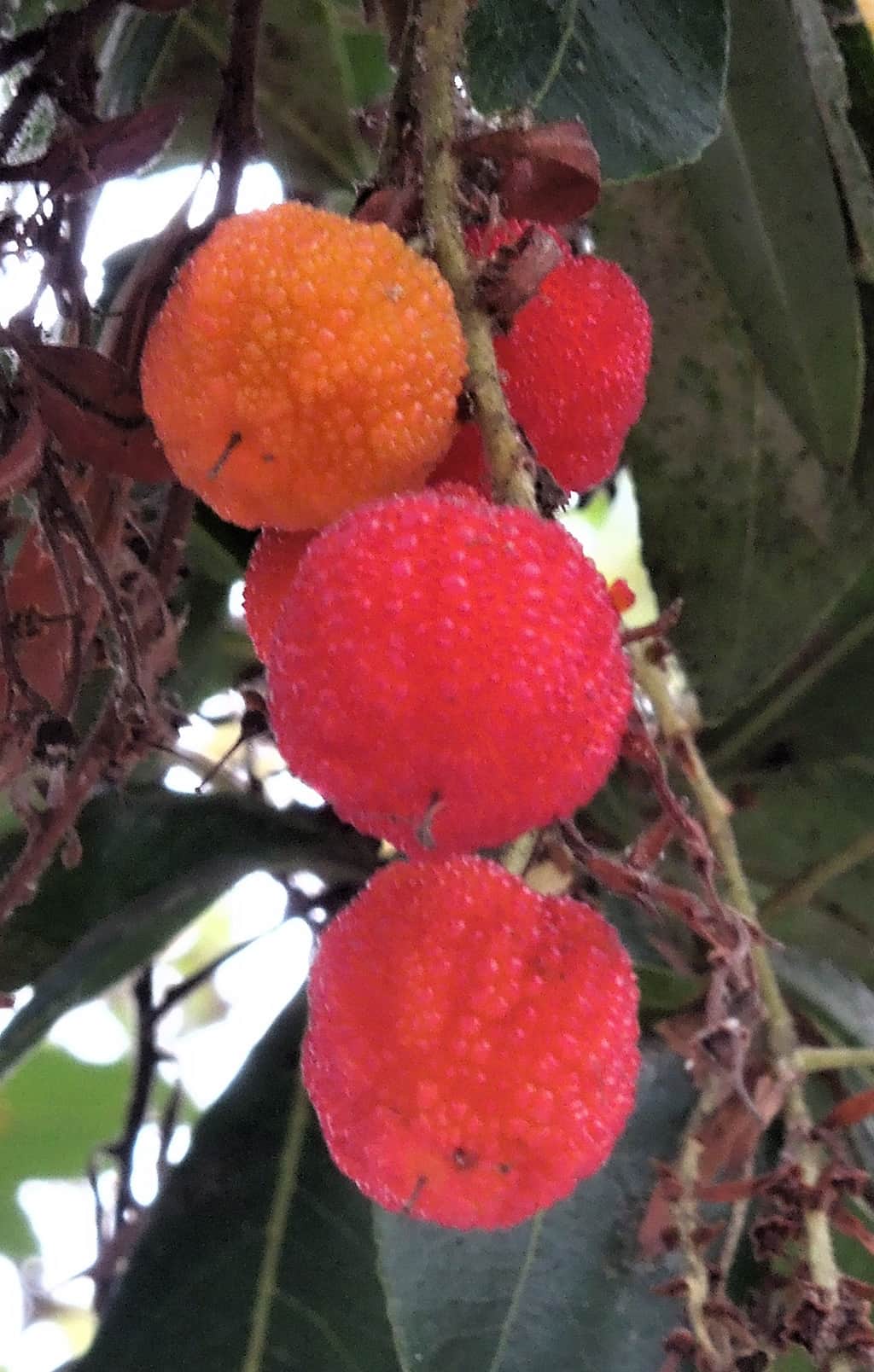Arbutus unedo vs Arbutus marina: How Do These Ornamental Trees Compare?
When selecting ornamental trees for the landscape, the strawberry tree is a unique option worth considering. Two popular species are Arbutus unedo and Arbutus ‘Marina’. While similar, these trees have key differences in appearance, care, and suitability for various climates. Understanding how Arbutus unedo and Arbutus marina compare allows gardeners to choose the best fit for their needs
Origin and Relation
Arbutus unedo is native to Ireland, southern Europe and the Mediterranean. It has been cultivated since ancient times. The common name “strawberry tree” comes from its red, bumpy fruits. Arbutus unedo ‘Compacta’ is a dwarf cultivar of this species.
Arbutus ‘Marina’ likely originated as a hybrid between Arbutus unedo and another Arbutus species, possibly the North American native Arbutus menziesii. It first appeared at a 1917 horticultural exposition in San Francisco. The hybrid’s exact parentage remains uncertain. As a hybrid, Arbutus ‘Marina’ is not considered a true native plant.
While related, Arbutus unedo and Arbutus ‘Marina’ have noticeable differences that impact their performance.
Growth Habit and Size
Arbutus unedo grows as a large shrub or small tree, reaching up to 30 feet tall and 35 feet wide at maturity. It has a rounded form with low-hanging branches. Without pruning, it grows in a dense, domed shape.
Arbutus ‘Marina’ develops into a medium-sized tree typically maturing at 25-40 feet tall and wide. It grows with a single trunk and rounded canopy. With pruning it can also be kept smaller as a garden shrub. But Arbutus ‘Marina’ has a more tree-like structure than Arbutus unedo.
Both species grow at a slow to moderate rate. But Arbutus ‘Marina’ ultimately reaches a taller height as a tree. Arbutus unedo stays shrubby unless extensively pruned into a tree form.
Flowers and Fruit
The flowers of Arbutus unedo and Arbutus ‘Marina’ are similar – clusters of small, bell-shaped blooms hanging from the branches. Arbutus unedo flowers are white to light pink. Arbutus ‘Marina’ flowers are bright pink to red.
They bloom in fall and early winter. Arbutus ‘Marina’ also blooms sporadically in spring and summer. Both trees flower and fruit simultaneously, extending seasonal interest.
The strawberry-like fruits are round, bumpy, and turn reddish when ripe. Arbutus unedo fruits are up to 1 inch wide. Arbutus ‘Marina’ fruits are slightly smaller at 3/4 inches across. The fruits have mild flavor and can be eaten fresh or made into jams. But they are not notably tasty.
Foliage and Bark
Arbutus unedo has oval, leathery leaves with toothed edges. They are 2-4 inches long. The foliage is dark green above and pale beneath.
Arbutus ‘Marina’ leaves are also oval and leathery but reach 4-5 inches long. The leaves are shiny green on top and bronze underneath when newly emerging.
Both species feature attractive bark – smooth when young but shredding with age to reveal cinnamon or orange tones underneath. This sculptural bark provides year-round ornamental value.
Climate Adaptability
A key difference between these two trees is their climate tolerance. Arbutus unedo thrives in mild Mediterranean climates with cool, wet winters and long, dry summers. It struggles with extreme cold or heat.
Arbutus ‘Marina’ adapts to a wider range of climates including colder winters and hotter summers. It can handle drier conditions than Arbutus unedo. The hybrid vigor makes it better suited for gardens beyond its native climate range.
Care Requirements
Both Arbutus species need well-drained soil and should not sit in wet conditions. Arbutus unedo requires more frequent watering while establishing. But once mature it also tolerates some drought.
Arbutus ‘Marina’ is moderately drought tolerant when its root system is extensive. It is less prone to root rot than Arbutus unedo.
These trees need little pruning or fertilizer once grown. Pests like scale, thrips, and aphids may sometimes be a nuisance but are not serious.
Since Arbutus ‘Marina’ adapts better to varying soils and watering conditions, it is generally easier to grow. But both require patience as slow growing trees.
Garden Uses
With its dense, domed shape, Arbutus unedo makes a fine evergreen hedge or screening shrub with minimal trimming. The twisted branching can also create artistic shapes. Pruning into a small tree form takes commitment.
The upright structure of Arbutus ‘Marina’ better lends itself to shaping as a single or multi-trunk small tree. It provides dappled shade beneath. The peeling orange bark and weeping flowers showcase well as a garden focal point.
Both work nicely in mixed borders or specimen plantings. They attract wildlife with pollen-rich flowers and fruits that birds relish. For coastal gardens, Arbutus ‘Marina’ may handle salt spray better than Arbutus unedo.
Compact Varieties
For smaller spaces, compact Arbutus cultivars are available. Arbutus unedo ‘Compacta’ reaches just 8-10 feet tall and wide – excellent for containers.
Arbutus ‘Marina’ dwarf cultivars include ‘Elfin King’ at 5 feet tall and ‘Oktoberfest’ maturing under 10 feet. These compact selections produce flowers and fruits even when young. They are ideal for residential yards with limited room.
Key Differences Summary:
-
Arbutus unedo is a large evergreen shrub while Arbutus ‘Marina’ grows as a small ornamental tree.
-
Arbutus unedo maxes out around 30 feet tall and 35 feet wide. Arbutus ‘Marina’ can reach 40 feet tall and wide.
-
Arbutus unedo flowers are white to pale pink. Arbutus ‘Marina’ has bright pinkish-red blooms.
-
Arbutus ‘Marina’ adapts to a wider range of climates and gardening conditions.
-
Arbutus unedo suits formal hedges and screens. Arbutus ‘Marina’ works better as a focal point specimen tree.
-
Dwarf cultivars of both species are available for compact spaces.
In suitable climates, Arbutus unedo and Arbutus ‘Marina’ both make outstanding evergreen garden plants. Their architectural shapes, attractive flowers and fruit, and ornamental bark provide year-round beauty. Consider the mature size, climate resilience, and growth habits of each species to select the best option for your landscape vision. With proper care, these unique trees offer delightful, low-maintenance color.

Santa Barbara Beautiful Tree of the Month – January 2018

The January Tree-of-the-Month is the Marina Strawberry Tree, Arbutus ‘Marina’, but this tree can be used in all four seasons in Santa Barbara. It’s a favorite tree choice for our home gardens, parks, and commercial landscapes because it looks good all year and is easy to take care of. This tree is very popular, and it deserves it. It has beautiful flower pendants, fruit that looks good, and trunks and limbs that look like sculptures.
It was a relatively new (1984) introduction to nurseries and landscaping. All of the ones you can buy today are from a line that first showed up at a horticultural exhibition in 1917 and was then cared for in a now-closed nursery in San Francisco’s Marina district, which is where the name “Marina” comes from. It looks like a cross between the common Arbutus species (Arbutus unedo), which has been grown for hundreds of years in the Mediterranean and Europe, and another Arbutus species. It looks a lot like our native Madrone tree (Arbutus menziesii), but the ‘Marina’ variety can grow in a wider range of conditions and is easier to cultivate.
The leaves are 4 to 5 inches long, shiny, dark green on top and light green on the bottom. The canopy is dense and round. Pink to red bell-shaped flower pendants can bloom all year, but most of them are in bloom in the fall and winter. The fruit is a ¾-inch round berry with bumpy skin that is yellow at first and turns strawberry red when ripe. This is how the tree got its common name, Strawberry Tree. While the fruit is edible, it tastes more like a gritty kiwi than a strawberry!.
Since the fruits ripen in the fall, you can see both the flowers and the fruits on the tree at the same time, which makes it look more beautiful. The fruits attract seed-eating birds, while the nectar- and pollen- bearing flowers attract bees and humming birds. The light-gray bark on the outside wears away in thin strips over time, revealing the reddish to cinnamon-brown bark inside. This is probably the most interesting thing about this tree.
Arbutus ‘Marina’ can grow to be over 40 feet tall and wide, while the average Strawberry Tree only gets to be 20 feet tall. It grows slowly, which is good, because it means it can fit into almost any garden size with little pruning and care. This beautiful hybrid is surprisingly tough. It can handle drought and most types of soil, but root and leaf diseases can happen if it gets too much water or doesn’t drain well.
The Marina Strawberry Tree can be grown with multiple trunks to make a wide feature in the garden, or it can be grown with only one trunk for smaller, more confined areas. In all forms, this fine tree adds amazing beauty to any garden, all year long!.
The 1500 and 1600 blocks of Mountain Avenue and the 1900 block of Bath Street all have street trees. Private garden trees are found at Sola Street at Mountain Avenue and at Micheltorena Street at Chino Street. There are two mature trees in East Alameda Park by Kids’ World.
Tree-of-the-Month articles are paid for by Santa Barbara Beautiful. One of their many goals is to make people more aware of and appreciative of Santa Barbara’s many beautiful trees. They have worked with the City Parks for a long time to do this.
Article and photos by David Gress



Strawberry Tree Fruit Review (Arbutus Unedo) – Weird Fruit Explorer – Ep. 71
FAQ
What is the difference between Arbutus marina and arbutus unedo?
What is the common name for Arbutus Marina?
What is another name for arbutus Unedo?
Are Arbutus marina trees messy?
What is the difference between Arbutus unedo and Muntingia calabura?
The common name for both Arbutus unedo and Muntingia calabura is “strawberry tree,” but they are actually two different species. To avoid confusion, the Muntingia calabura is also called the Jamaican cherry, as well as the strawberry tree. It grows faster than the Arbutus unedo. The Jamaican cherry trees berry tastes like cotton candy.
Is Arbutus ‘Marina’ a standard tree?
This is our top selling tree and we grow it both as a “Standard” that is high headed and useful in patios or for street tree use and also in a natural low branching form (sometimes incorrectly called a “multi”) – for images and information on the natural low branching form plants see our listing at Arbutus ‘Marina’ (low branching).
What does Arbutus ‘Marina’ look like?
Arbutus ‘Marina’ (standard form) – A medium to large evergreen tree, growing to 25-50+ feet tall with a broad dense crown and annual growth causing older bark to peel away from the trunk and branches, revealing the beautiful shiny red new bark underneath.
Is ‘Marina’ a hybrid of Arbutus?
A. ‘Marina’ is a hybrid of European species of Arbutus named and introduced in 1984 by the Saratoga Horticultural Research Foundation (SHRF). See its SHRF Plant Culture Data Sheet for notes on its possible parentage.
Where did Arbutus ‘Marina’ come from?
Arbutus ‘Marina’ was named and introduced into the California nursery trade in 1984 by the Saratoga Horticultural Foundation from cuttings taken from a tree in the San Francisco garden of Carla and Victor Reiter, though the origin of this tree remains a bit of a mystery. Mr.
Is Arbutus a hybrid?
It appears to be a hybrid of the standard Arbutus species (Arbutus unedo, cultivated for centuries in the Mediterranean and Europe) combined with another Arbutus species.
- A Complete Guide to Caring for Yuki Cherry Blossom Shrub - January 23, 2025
- Identifying Red Hot Poker Seeds: What to Look For When Harvesting Torch Lily Pods - January 23, 2025
- A Complete Guide to Harvesting Evening Primrose Seeds - January 23, 2025
